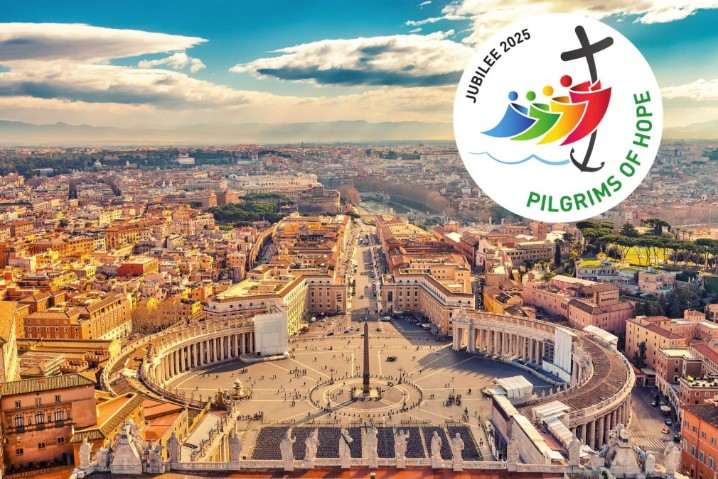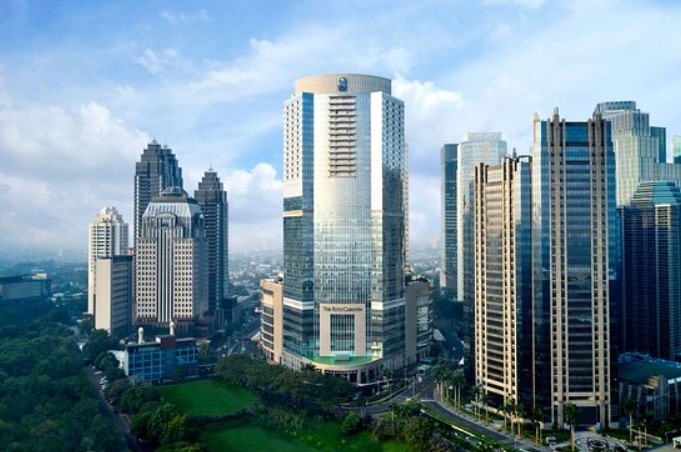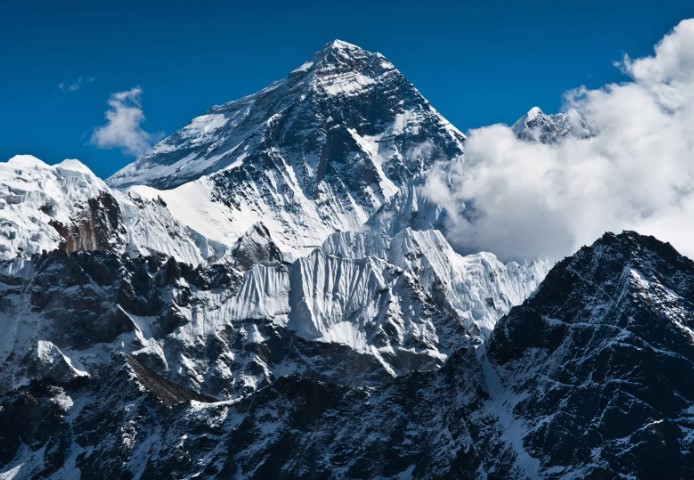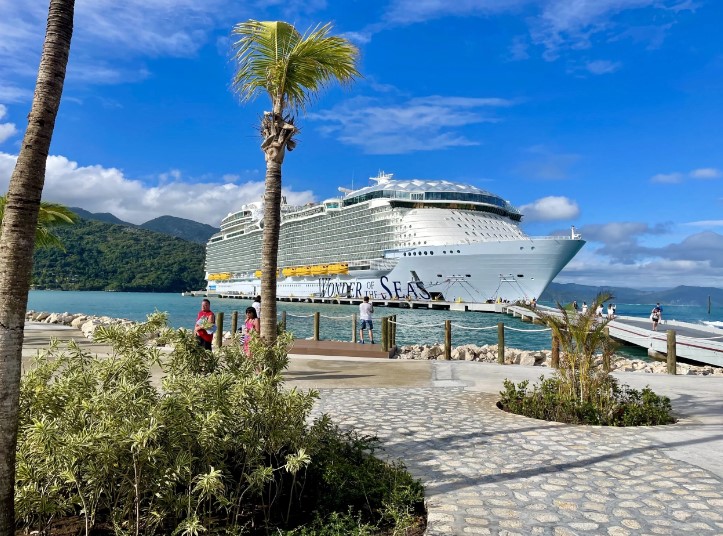Ecuador’s volcanic landscape presents a unique opportunity for intrepid explorers who want to break into high-altitude mountaineering.
About an hour south of Quito, the nation’s capital, lies Cotopaxi National Park, a wilderness of green rolling hills interrupted by the jagged peaks of volcanoes. At the center of the park lies Cotopaxi, which translates from the local Kitchwa language as “neck of the moon.”
Rising to 19,000 feet, Cotopaxi is one of the tallest active volcanoes in the world and the second-highest mountain in Ecuador. These volcanoes hold a special place in the culture and history of Ecuador’s Indigenous peoples and continue to fascinate native Ecuadorians and the explorers who travel from all over the world to climb them.

While Cotopaxi poses a serious challenge, especially for hikers new to alpinism, the mountain’s most popular summit route avoids technical climbing. As a result, reaching the top requires only snow gear, crampons, and an ice axe, all of which are supplied by the park’s mandatory guides. It also helps to have a positive attitude in the face of freezing temperatures and brutal winds.
Few people die on Cotopaxi — only about one person yearly — but the mountain still has dangerous weather and a hike with over 3,000 feet of elevation gain. Mortal danger is unlikely, but reaching the top is still an accomplishment.
More importantly, sunrise from the slopes of Cotopaxi offers an unforgettable memory, illuminating a landscape that you’ll remember long after the blood has returned to your fingers.
If you’re looking for a new adventure, here’s what you need to know to maximize your chances of summiting this beautiful and mysterious mountain.
When to Go to Cotopaxi
The regular season for summiting Cotopaxi, and many other volcanoes in Ecuador, runs from June to July or December to January. The middle of the year usually entails exceptionally high winds blowing nonstop for days, while the end of the year often offers the best conditions, with less wind and rain.
That said, I spoke with several experienced local climbers who summited Cotopaxi at various times of the year. One such climber, a young Ecuadorian woman who has climbed many of Ecuador’s volcanoes, said she climbed Cotopaxi in March. She waited for a full moon and enjoyed a relatively easy hike. (It’s always a good idea to listen to the advice of locals.)
Transportation
To Quito
Flying to South America is relatively inexpensive, at least compared to destinations in Europe or Asia. That’s especially true for those living in New York or Miami, which have large populations of Ecuadorians and cheaper ticket prices as a result.
A flight to Quito from either of those cities can cost as little as $100-150. Adding a flight to those cities from anywhere else in the U.S. will likely cost $150-200, so a reasonable price range for flying to Quito is $100-400, depending on your location.
To Cotopaxi National Park
While Cotopaxi National Park is only an hour’s drive south of Quito, it’s 2 hours away from the capital’s airport. (That’s likely because Quito’s population of 2 million lives amid a steep mountain range at 9,350 feet, with no area for a decent runway.)
Paying a taxi for a 2-hour ride direct from the airport to your lodging will likely cost around $50-60. It’s cheaper to book accommodation first, and then ask the hostel or hotel for help with transportation. For example, if you’re staying at Secret Garden Cotopaxi, it’s relatively easy to get a shuttle to their Quito hostel and then another to their hostel in the park. It costs $10 for each trip.
As for getting to the mountain itself, the guiding services will take you there from your lodging.

Lodging
Tourism is vital to Ecuador’s economy, contributing more than 5{0b5b04b8d3ad800b67772b3dcc20e35ebfd293e6e83c1a657928cfb52b561f97} to its GDP. Most of that comes from the ecotourism of the country’s awe-inspiring mountains, rainforests, and the ever-popular Galapagos Islands.
Given the proximity of Cotopaxi National Park to Quito, it’s not surprising that travelers have many options for hostels catering to the hike-and-bike crowd. The biggest town near the park is Matachi, where travelers can find lodging and guiding services for Cotopaxi and other nearby volcanoes. Motivated travelers can find many other hostels in more secluded areas nearby.
Here are a few recommended options:
Secret Garden Cotopaxi
For my Cotopaxi trip, I stayed in Secret Garden Cotopaxi, an uber-popular hostel that lives up to the hype. The hostel’s package deal starts at $95 for 3 days and 2 nights, drawing young people from all over the U.S. and Europe. It helps that Secret Garden also manages a hostel in Quito that’s popular with the party crowd.
The hostel’s rates start at $40 a night for a dorm bed, but remember that price includes all your meals (and the friendly staff here made some of the best meals I’ve eaten after living in Ecuador — no joke). It’s worth noting that Secret Garden does not offer Wi-Fi and is a bit farther away from Cotopaxi than other options.

Hostal Rondador Cotopaxi
If you’re looking for a cheap option close to Cotopaxi, Hostal Rondador Cotopaxi is hard to beat. Prices start at $30 a night, which includes three meals a day, and the staff can help you book your guide for Cotopaxi.
Named for the rondador, a pan flute considered the national instrument of Ecuador, the hostel also offers a small museum filled with Andean musical instruments and explanations of their cultural significance. Its homey wooden building and manicured outdoor spaces make it an attractive and relaxing place to stay between adventures.
Tambopaxi
As the hostel inside Cotopaxi National Park near the base of the actual volcano, Tambopaxi offers advantages in terms of proximity and killer views. However, it’s also more expensive than other options. A bed in the hostel starts at $84 a night, and private rooms will cost at least $100.
Also, those prices don’t include food purchased separately at the restaurant on site. However, it’s a great option if you want something a bit more luxurious — and would prefer a shorter car ride to the base of Cotopaxi.
Food
While travelers can find a few restaurants in Machachi and right outside the park, it’s easier to book lodging with in-house cooks than to forage for every meal. Luckily, most of the hostels near Cotopaxi provide all the sustenance you need, especially breakfast.
Many hostel chefs will also be comfortable cooking vegetarian or vegan options, given the international travelers who frequent these places.
Activities
While Cotopaxi remains a big attraction, this sprawling national park offers an abundance of hikes up its neighboring volcanoes, including Rumiñahui, Pasochoa, and Morurco.
They’re great opportunities to acclimate yourself before attempting the Cotopaxi summit hike. That’s especially true for Rumiñahui, which tops out at 15,488 feet and requires hiking nearly 3,000 feet of elevation gain to reach the central summit.

Ecuador only has about 110 Andean condors (according to my guide), but it’s not uncommon to see them soaring on the chilly updrafts surrounding these volcanoes. I saw one during my Rumiñahui hike. Even from 200 feet away, my heart stopped watching this gentle giant glide effortlessly through the clouds — a trip highlight rivaling Cotopaxi itself.
You can also find river hikes with pristine waterfalls and swimming holes, azure lagoons fed by alpine creeks, and bike rides that take you straight to Cotopaxi’s glacier.
Cotopaxi Guides
Like any big mountain, the way you choose to climb Cotopaxi depends on your experience and your comfort with risk.
The park requires a guide to attempt the summit, and once you’ve seen the crevasses and sudden dropoffs that dominate Cotopaxi’s icy upper reaches, you will understand why. The prices for guides are generally consistent, making a choice less of a financial one.

You should also consider the tradeoff of going solo or with a group. Joining other climbers will result in a lower price, but with only one guide, the whole group must turn back if a single person loses their ability to continue.
Going solo with a single guide generally ranges from $300 to $400. A young Israeli at my hostel said he shopped around for guides in Quito and found one for $260. But once again, the margin isn’t that wide. Even with a group, you will likely pay around $250-300.
However, these services also provide you with all the gear you need for the hike, including snow pants, jackets, gaiters, boots, crampons, ice axes, helmets, and even sunglasses. All you need to bring is socks, underwear, and a water bottle.
You’ll even be given food and hot drinks at the refugio (shelter), which once again surprised me with its delicious and filling meals. (The post-hike pancakes at 7 a.m. went down like ambrosia.)
As for specific guiding services, I can only vouch for the one I used: Lonely Summits, the preferred agency of Secret Garden Cotopaxi. I can’t speak highly enough about the two guides on my hike, Segundo and Lucy. They were experienced, knowledgeable, and caring. I can’t imagine better guides than these two people, who embodied the patience and honesty that defined the Ecuadorian people during my visit.
Climbing Cotopaxi
As for the hike itself, the experience will depend on the season and weather. My group included two guides, a cheerful 30-year-old man from Switzerland, and myself.
For us — we were hiking at the end of May in conditions slightly wetter and colder than usual — safely climbing meant starting at midnight to take advantage of the compact snow and avoiding the snowmelt of the morning sun.
We trekked through sub-zero temperatures, howling winds, and pitch-black darkness — the only light coming from the distant shimmer of Quito. It took 4 hours to reach the summit, a relatively fast time from what I learned later. But it didn’t feel easy to me.
The final 1,000 feet of intensely steep hiking up an exposed snow slope left me with self-doubt. Perhaps that’s inevitable when the body enters the panic state of diminished oxygen.

Although it took 4 hours to reach the summit, where we spent less than 5 minutes, it felt dangerously cold and windy in those final moments before sunrise. As we descended the mountain and the monochromatic landscape suddenly glowed with gold and green, my brain shook away discomfort and returned to pure joy.
I felt gratitude for the people that helped get me here — and for the mountain that Ecuadorians view with profound reverence. I felt respect and the humble perspective that only nature can provide.

Ecuador
I found many perspectives in Ecuador’s mountains.
Viewing the world from high up connected me to nature and reminded me of the cultures and peoples that have worshipped these volcanoes for centuries.
Cotopaxi, for example, is a man. I learned the mountain’s gender from my guide Lucy, who explained that all the mountains in Ecuador with chuquiraga — the flower of the Andes —are male. As a result, only two mountains in the country were considered female by the Kitchwa peoples that have lived among them for so long.
I learned a lot about Ecuador during my time in Cotopaxi National Park: from my guides, fellow travelers, and the vast, strange landscape — one small glimpse of the 5,500 miles of the Andes. For those new to South America, the Andes offer endless starting points for exploring these mountains.
At Cotopaxi, you will find easy access, cultural wealth, and a cheap price tag for high adventure.
It’s a trip worth taking.







More Stories
This Phone Crossbody Is Perfect for Travel
Complete Guide To Croatia’s Medieval Seaside City
Universally Flattering Swimsuits I Always Pack